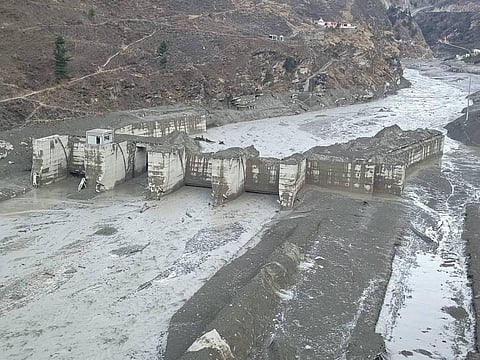

DEHRADUN: It was a glacial break alright, but the jury is still out on how and why it actually happened.
However, the mismatch between the haste in commissioning projects in the ecologically fragile zone and the need to fortify the mitigation mechanism suggests it was a disaster waiting to happen.
Experts blame it on the lessons not learnt by successive governments, given Uttarakhand’s history of natural disasters.
A former glaciologist at Dehradun’s Wadia Institute of Himalayan Geology, D P Dobhal, called for a detailed probe.
“Lake formation must have happened, which breached today and caused the floods,” Dobhal said, adding that heavy sediments in the floodwater indicate an avalanche or glacial debris could have triggered the burst.
“It will take time to ascertain the reasons as had happened with the 2013 disaster in Kedarnath. After investigation it was confirmed to be a glacial lake outburst flood (GLOF),” said Dobhal.
The possibility of the incident being GLOF has rung alarm bells among the glaciologists. Given that it occurred in winter, it would signal that global warming was a major contributing factor.
In 2014, a high-powered committee, constituted by the Supreme Court, led by Ravi Chopra, had recommended scrapping of 23 out of 24 hydel projects slated for construction above an altitude of 2,000 metres in the aftermath of the 2013 floods.
“We submitted a report warning against constructing hydel projects at an altitude above 2,000 metres, noting various vulnerabilities which could result in a major disaster. Altitude above 2,000 metres is a para glacial region, where heavy constructions should be avoided,” he said.
But the recommendation was not acted upon, said activist Aakash Vashishta.